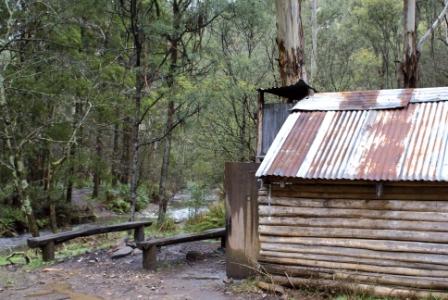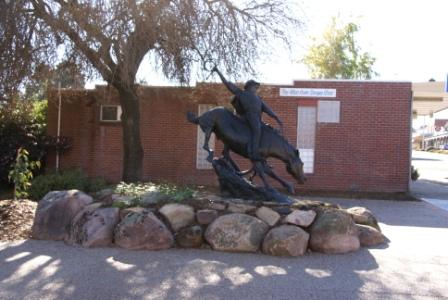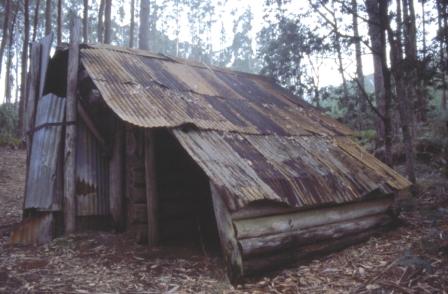MOUNTAIN CATTLEMEN
(www.northeastvictoria.online)
As mentioned in the section on early exploration, there was little immediate response to the Hume and Hovell Expedition of 1824, but the 1836 expedition of Major Mitchell seems to have been the catalyst for the start of widespread settlement, and the early 1840s saw pastoral runs being set up all over the North-east.
Explorers McKillop, McFarlane and Livingstone had already reached the Omeo area from the Monaro Plains in 1835, and in the early 1840s, several pastoral properties were established in this area, including those of the Pendergast Brothers. The Benambra Run was established in 1841, as was Hinnomunjie; whilst south-west of Omeo, Wonnangatta Station was set up by American migrant Oliver Smith in 1861. The Dargo area also became home to several pastoral properties in the 1870s, with the Treasure Family having established their Dargo Run in 1878.
North of the ranges, the Bogong High Plains were first documented by stockriders Brown and Wells in 1851, and as well as being enthusiastic about their new found homeland, the early settlers were keen to exploit the perceived benefits of grazing cattle on the nearby High Country.
For example, the Wallaces of Kergunyah quickly established a summertime routine of high country grazing, a practice that was followed by many other pastoralists of the North-east. From elsewhere in the Kiewa Valley, the Roper, Maddison, Cooper, Ryder and Howman families also drove cattle into the alpine areas; whilst in the upper Ovens River Valley, the Blair, Weston and Dibbins families were doing the same thing.

Lower down the Ovens Valley, Thomas Buckland took up the Junction Run, at the confluence of two significant rivers at what became known as Porepunkah in 1841 (these two streams would soon be known as the Ovens and Buckland Rivers).
In order to facilitate high country grazing, the Buckland’s cut a track through to the Mount Buffalo Plateau from the valley floor. This became known as Goldies Track (after the station manager) and remained in use until the mid-1950s, when alpine grazing was finally halted on the Plateau.
The Upper Murray area was first explored by Europeans in the 1830s. At this time would-be settlers, such as the Huon de Kerilleau and Shelley Families, ventured into the area from what is now Albury-Wodonga. Corryong Station (a pastoral property) was established by the Cowper Family in 1838, and it was from this property that the township got its name.
The famous grazing property ’Tom Groggin’ made famous by Banjo Patterson in his epic poem ’The Man from Snowy River’, was subsequently established on the Upper Murray River. Patterson was a guest at Walter Mitchell’s property ‘Bringenbrong’ in 1890, and heard about Riley’s epic ride from the man himself. Shortly afterwards, Patterson wrote and published his poem ’The Man from Snowy River’. It was first published in ’The Bulletin’ on April 26th, 1890, and was reprinted in the centenary of the magazine in January 1980.
Patterson was inspired to write his poem about ’the colt that got away’ by the tale of how the manager of Tom Groggin, Jack Riley, had made a spectacular chase down the mountainside in pursuit of a prize thoroughbred. Riley became the manager of the 20,000 acre property Tom Groggin in 1884, and stayed there until 1914.
Riley remained in the High Country until his last days. He refused to leave his hut at Tom Groggin except for occasional brief visits to Corryong, however in July 1914 word got around that Riley was too sick to look after himself, and a rescue party set out from Corryong to bring him into town.

The rescue party was faced with a tough overland journey of 43 miles and Riley was transported on horse-back, in tandem with another rider. The party slowly made its way to Surveyors Creek on the Indi River and camped there for two nights as Riley was now too weak to move. On the second night Jack Riley passed away, symbolically by a bush campfire, amongst mountains and friends. The man from Snowy River had made his last ride.
Most of the mountain cattleman families built huts in the high country, so that they could have somewhere reasonably comfortable to eat and sleep. Some of the huts built by these early pioneers still stand, however many have been lost to bushfires over the past 150 years. Many of them displayed interesting (albeit simple) architecture (see photograph), and many were popular places to visit for bushwalking and 4wd groups.

Wallaces Hut (south of Falls Creek) is classified by the National Trust, and is well worth a visit. The hut and its surroundings are very photogenic, and the hut is of interest for its construction methods, and for the insight it provides into the conditions under which these early explorers, and surveyors, of the high country lived.
Refer to Harrys Stephenson’s book Cattlemen and Huts of the High Plains and Klaus Heuneke’s excellent book Huts in the Victorian Alps for more details on the huts of the mountain cattlemen. Harry Stephenson’s book has been out of print for many years, but many libraries still have a copy (when it was in print, it broke all records for sales of a self-published book in Australia).
Another great book is Cattlemen of the High Country : The Story of the Mountain Cattlemen of the Bogongs, by Tor and Jane Holth.
Intro Screen on a fresh browser page
COPYRIGHT © 1995-2020, Chris McLaughlin.